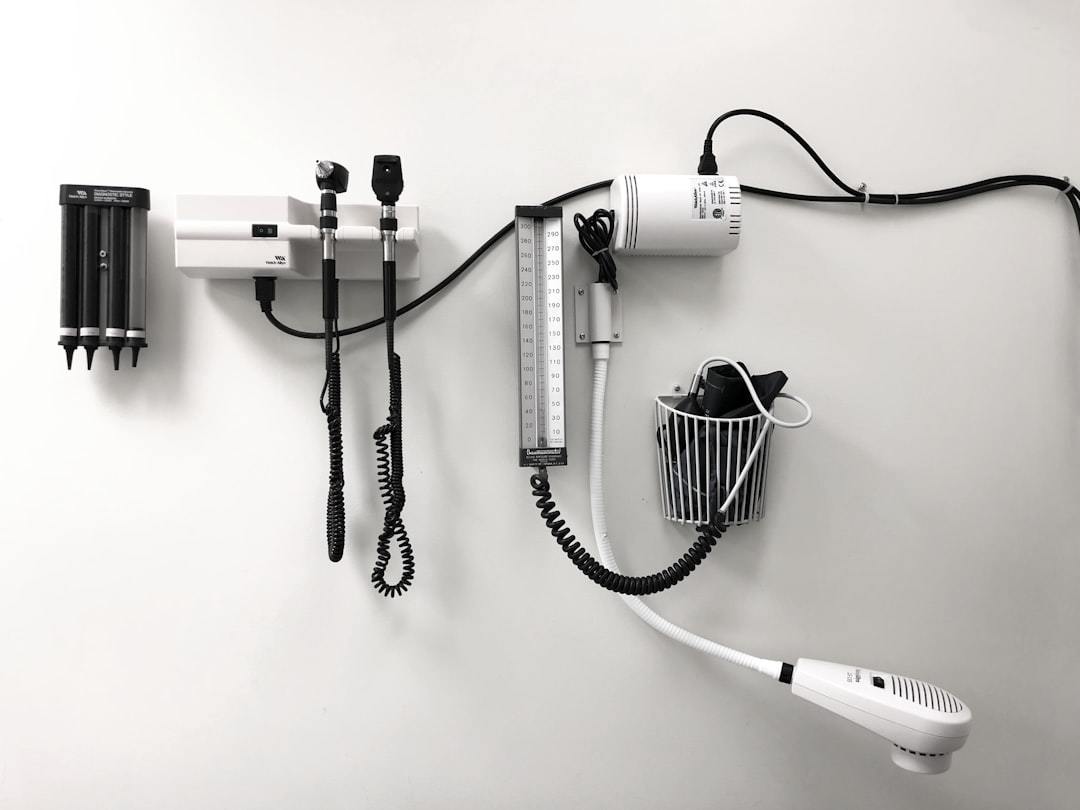
Health care office fraud. It’s a real thing, and it’s costing us all. I’m not talking about a few bucks here and there. I’m talking about billions of dollars every single year. Money that could be going towards actual patient care, but instead, it’s lining the pockets of fraudsters.
It’s not just about the money. Health care office fraud really chips away at our trust in the medical system. It makes us wonder if our doctors and nurses are genuinely looking out for us, which is pretty unsettling.
Health care office fraud is a problem, but its one we can fight against effectively. Today we’ll talk about practical steps you can take to help shut it down. Ready? Let’s go!
Table Of Contents:
- What Is Health Care Office Fraud?
- How to Recognize and Report Health Care Office Fraud
- Consequences and Prevention of Health Care Office Fraud
- Real-Life Examples of Health Care Office Fraud Cases
- Conclusion
What Is Health Care Office Fraud?
Health care office fraud is a big problem that hurts patients, doctors, and the entire healthcare system. It happens when medical professionals or facilities use dishonest methods to make illegal money from health insurance programs like Medicare and Medicaid.
Fraud in this area can appear in various forms, but the aim is always to enrich a few greedy individuals at the cost of those who need medical attention most.
Common Types of Health Care Fraud
Some common types of health care fraud include billing for services not rendered, upcoding of services, unbundling of services, kickbacks, and providing medically unnecessary services. In 2020, the Department of Justice recovered over $1.8 billion from civil cases involving fraud and false claims against the government in the health care industry.
I’ve witnessed how these schemes can really harm patients. People get overcharged, receive unnecessary treatments, and sometimes even face fake diagnoses – all for someone’s extra profit. It’s absolutely disgusting.
How Health Care Office Fraud Impacts Patients and Providers
The impact of healthcare fraud is huge raising insurance costs and adding extra expenses for patients. It also hurts trustworthy health care providers financially and damages their reputations. The National Health Care Anti-Fraud Association says that these fraudulent activities cost us roughly $68 billion every year.
That’s money that could be going towards actual patient care, not lining the pockets of criminals. And it’s not just about the financial impact – this kind of fraud erodes trust in the medical system as a whole.
Red Flags of Potential Health Care Office Fraud
Some red flags of potential fraud include unusually high patient volume, excessive or unusual billing patterns, high pressure sales tactics for medically unnecessary services or products, and a lack of supporting documentation for claims. Providers who offer “free” services or waive copayments and deductibles may also be engaging in fraudulent practices.
If you ever feel something seems too good to be true at a doctor’s office or clinic, it probably is. Always trust your instincts and don’t hesitate to ask questions or report any suspicious activity.
How to Recognize and Report Health Care Office Fraud
Spotting and reporting fraud in health care offices is really important to keep yourself and others safe. It might not always be obvious, but there are some signs that can alert you something’s off.
Signs of Potential Health Care Office Fraud
Patients should be alert for signs of potential health care office fraud such as providers who bill for services not received, pressure to undergo unnecessary tests or procedures, or a provider’s refusal to submit claims to insurance. Inconsistencies between what is billed and the actual services rendered can also be a red flag.
I once had a doctor try to convince me I needed an expensive, invasive test that made no sense for my symptoms. When I pushed back, they got really defensive – a huge red flag. Always advocate for yourself and don’t be afraid to get a second opinion.
Steps to Report Suspected Fraud
If you suspect health care fraud, document your concerns and gather any supporting evidence. You can report suspected fraud to your insurance company’s anti-fraud department, your state’s Medicaid Fraud Control Unit, or the Department of Health and Human Services Office of Inspector General. The OIG Hotline accepts tips by phone at 1-800-HHS-TIPS or online at oig.hhs.gov/fraud/report-fraud.
Standing up isn’t easy, yet it’s so vital. I’ve reported dodgy billing tactics myself though troublesome, I felt proud knowing I d was what’s right. Everyone has a role in fighting fraud.
Protecting Your Personal Information
To protect against medical identity theft, safeguard your health insurance card and information like you would a credit card. Regularly review your medical bills and Explanation of Benefits statements for any suspicious activity. If you believe you may be a victim of medical identity theft, contact your health insurance company and all three major credit bureaus to place a fraud alert on your account.
I’m always careful about sharing my health info, even with doctors. Sadly, we need to be on guard against fraud.
Consequences and Prevention of Health Care Office Fraud
The effects of health care office fraud extend far past monetary losses; they affect patient safety, damage provider reputations, and burden society at large. It’s essential that we bring offenders to justice while collaborating as a community to combat such criminal actions.
Legal Consequences for Perpetrators
Those caught in health care fraud can face serious consequences like prison time, large fines, and being banned from federal health programs. The False Claims Act allows for triple damages plus civil penalties between $5,500 and $11,000 per false claim. In the worst cases, providers might also be charged criminally with offenses such as mail fraud, wire fraud, money laundering or illegal distribution of controlled substances.
As a white-collar crime, health care fraud is often seen as less serious than violent offenses. But the impact on victims is very real. I’ve seen patients saddled with huge bills, suffering from unnecessary procedures, even denied care because of fraudulent schemes. The punishments need to fit these life-altering crimes.
Strategies to Prevent Health Care Office Fraud
Health care organizations can fight fraud by setting up strong compliance programs, doing regular audits, and carefully checking out their employees. Payers should use data analytics to spot odd billing patterns and look into suspicious claims. Requiring prior authorization for some services and using electronic visit verification systems can also help stop fraudulent activities.
I once worked with a clinic that had strict rules to stop employee fraud. It was annoying sometimes, but it kept everyone honest. Patients should also feel comfortable questioning any bills that look wrong. We all need to stay alert.
The Role of Technology in Combating Fraud
These days, advanced data analytics and AI tools help detect possible health care fraud as it happens. Predictive models do a better job of spotting outliers and odd billing habits compared to traditional techniques. Plus, blockchain tech looks promising for securely sharing patient info between providers and reducing the risk of fraudulent activities.
I’m optimistic that as technology keeps advancing, we can outsmart fraudsters. But tech isn’t the whole answer. We also need everyone in health care to embrace old-school values like honesty and responsibility.
Real-Life Examples of Health Care Office Fraud Cases
Talking about health care office fraud can seem abstract, but real-life cases show its true impact. From cities like Los Angeles to Miami, no community is safe from this issue. These stories highlight just how widespread and complicated the problem really is.
The Alexander Istomin Ghost Office Fraud Scheme
In 2019, Alexander Istomin pled guilty for his role in a $34 million ghost office fraud criminal scheme involving health care in Los Angeles. Istomin and his co-conspirators established fake medical clinics and used stolen identities of doctors to bill Medicare for services that were never actually provided to patients. The scheme involved setting up dozens of phony clinics across multiple states to appear as legitimate medical facilities.
Health care scams by fraud criminals are more intricate than you’d think, and this case proves it. They didn’t stop at false bills but created a whole bogus medical system to fill their pockets with cash. It’s truly enraging.
Other Notable Health Care Office Fraud Cases
In 2020, an Oklahoma orthopedic surgeon and his co-conspirators were ordered to pay $72.3 million in restitution for fraudulent billing and illegal kickback schemes. The surgeon performed unnecessary surgeries and billed for excessive and fraudulent services. In another case, a Texas hospital administrator was sentenced to 10 years in prison for a $16 million Medicare fraud scheme that involved billing for partial hospitalization program services that were not medically necessary or not provided.
These cases highlight how fraud schemes often involve legitimate medical professionals abusing their positions of trust. It’s not always a faceless criminal – sometimes it’s a well-respected doctor putting profits over patients. As a patient, that’s a truly frightening thought.
The financial hit from health care fraud is huge, but it’s the personal toll that truly devastates. People’s lives are endangered, their savings vanish, and trust in the system gets destroyed. We must keep spotlighting these issues to highlight how crucial it is to catch and prevent fraud throughout every part of our health care system.
Health care office fraud involves dishonest practices to profit from insurance programs. It includes billing for unrendered services, unnecessary treatments, and fake diagnoses. Patients face higher costs and eroded trust in the medical system. Be vigilant for red flags like unusual billing patterns or high-pressure sales tactics.
Conclusion
Health care office fraud is a serious issue that affects us all. It’s not just about the money lost, but also about the erosion of trust in our medical system.
The bright side is that we can act to stop and spot health care office fraud. By staying alert, flagging any odd behavior, and backing anti-fraud initiatives, we’re able to make a meaningful impact.
The fight against health care office fraud is something we must tackle as a team. So let’s continue our efforts for a cleaner, fairer tomorrow.




